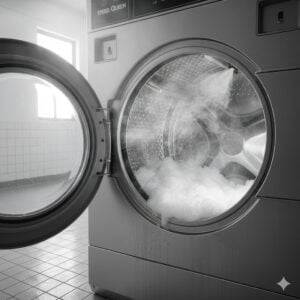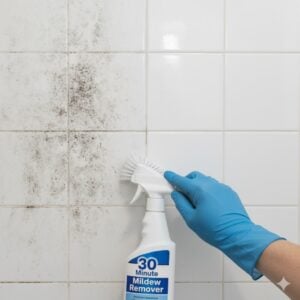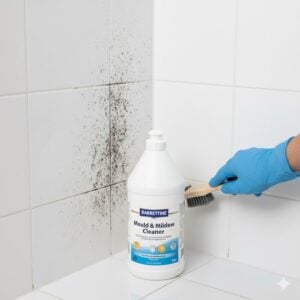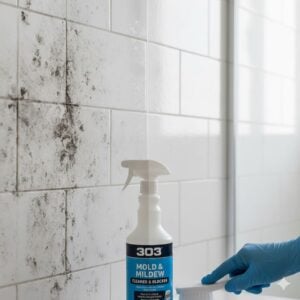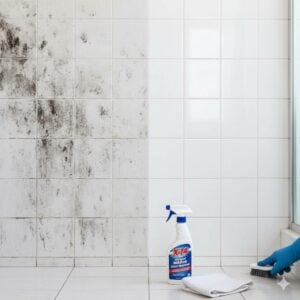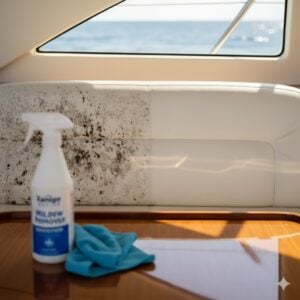Mildew and mold are two stubborn enemies that can sneak into your bathroom, kitchen, ceiling corners, closets—or even your mattress—without warning. Living in the UAE, with its humidity, AC condensation, and long warm seasons, gives these fungi the perfect opportunity to thrive. If you’ve spotted black, green, or fuzzy patches—or worse, started smelling something musty—you’re probably dealing with a mold or mildew problem that needs real action.
So, what’s the best way to get rid of them? Is regular cleaning enough? Should you use a store-bought mold cleaner, or is it time to bring in the professionals? In this guide, we break down the differences between mold and mildew, how to choose the right cleaner, and the safest way to get your home back to fresh and breathable again.
Table of Contents
Toggle1. What’s the Difference Between Mold and Mildew?
Many people use the words “mold” and “mildew” interchangeably—but they’re not exactly the same. Understanding the difference can help you choose the right cleaning solution and prevent future growth more effectively.
Mildew is usually white, gray, or yellow, and tends to grow flat on the surface of damp areas like shower walls, sink edges, or fabric. It smells slightly musty and is easier to clean in the early stages.
Mold, on the other hand, is darker (often green, black, or brown), fuzzy or slimy in texture, and can penetrate deeper into surfaces. It’s usually a sign of longer-term moisture buildup and can be much harder—and more dangerous—to remove.
If you press on it and it feels soft, damp, or slimy, you’re likely dealing with mold. Mildew is powdery and surface-level. Mold is also more likely to trigger health problems like coughing, allergies, or skin irritation, especially in young children or elderly people.
2. What Makes a Good Mildew and Mold Cleaner?

Choosing the right cleaner depends on three things: where the mold or mildew is growing, how deep it’s gone, and how sensitive you or your family are to harsh chemicals. In general, a good mildew and mold cleaner should:
- Contain a fungicide or antimicrobial agent to kill spores effectively
- Be safe for the surface type — whether it’s tile, wood, fabric, or painted wall
- Have minimal fumes, especially in closed indoor areas
- Work quickly, with visible results in 10–15 minutes
In the UAE, many people try bleach-based solutions for bathrooms or kitchen tiles, but bleach can damage certain surfaces and doesn’t always penetrate porous materials like wood or grout. Enzyme-based or hydrogen peroxide-based cleaners are often safer and still effective.
Here are a few cleaner types you might find useful:
- For bathrooms: Anti-mildew sprays with chlorine dioxide or hydrogen peroxide (e.g., Tilex Mold & Mildew Remover)
- For fabric: Gentle enzyme-based cleaners that lift mildew without damaging textiles
- For ceilings or walls: Mold-killing primers or professional-grade solutions used before repainting
We recommend testing any product on a small patch first, especially on painted or delicate surfaces.
3. Can You Make a DIY Mold or Mildew Cleaner?
If you’re dealing with a small patch of mildew on tiles or walls, a DIY mix can be a quick solution. For example:
- White vinegar spray: Fill a spray bottle with distilled vinegar, spray directly on the mildew, let sit 1 hour, scrub with a brush.
- Baking soda paste: Mix baking soda and water into a paste. Apply to grout or corners, scrub, and rinse.
- Hydrogen peroxide: Spray 3% peroxide directly onto mold, wait 15 minutes, and wipe clean.
While these can help with surface mildew, they’re rarely enough for deeper mold infestations. DIY options also won’t solve structural moisture problems like leaks or condensation buildup behind furniture.
4. When Should You Call for Professional Mold Removal?
If the mold covers more than 1 square meter, keeps coming back, or is in a hard-to-reach area like ceilings, behind AC ducts, or under carpets—cleaning alone won’t fix it. It’s time to bring in licensed mold remediation professionals.
Here in the UAE, certified services like Bio-On use:
- Moisture detection tools to find the real cause of mold behind walls or tiles
- HEPA vacuums and air scrubbers to remove spores safely without spreading them
- Safe fungicides and sealants that prevent regrowth and protect surfaces
The cost depends on how big the affected area is. As a rough guide from Bio-On UAE:
- Small patch (under 1 sq.m.): AED 35
- Medium (1–3 sq.m.): AED 30/sq.m.
- Larger areas: AED 20–25/sq.m. or free inspection for more than 10 sq.m.
If you want a fast quote, just click the contact button on the right-middle of this post. We can send someone over for an inspection and let you know what’s needed—no pressure, no obligation.
5. How to Prevent Mold and Mildew After Cleaning
Chemicals might clean mold, but if you don’t stop what caused it, it’ll be back. Prevention is the key:
- Keep humidity under control: Use a dehumidifier if your room feels damp, especially in basements and bathrooms.
- Ventilation is your best friend: Use exhaust fans in the bathroom, open windows daily, and avoid sealing everything too tight.
- Fix leaks immediately: A dripping pipe or a cracked window seal is all mold needs to grow again.
- Clean regularly: Wipe down surfaces prone to moisture like shower walls, kitchen backsplashes, and under-sink cabinets.
We often find mold hiding in furniture backs and mattress bases. So if your home has poor air flow or your AC leaks, it’s worth checking hidden corners every few weeks.
Conclusion
Whether it’s a light case of mildew in your shower or a spreading black mold patch on your ceiling, acting early with the right cleaner can save you time, money, and stress. From home remedies to store-bought sprays, there are plenty of tools available—but they work best when combined with good ventilation and moisture control.
If you’re not sure whether the mold is safe or need help choosing the right removal method, don’t guess. Click the contact button on the right-middle of this post and let us help you breathe clean again—with zero risk.







